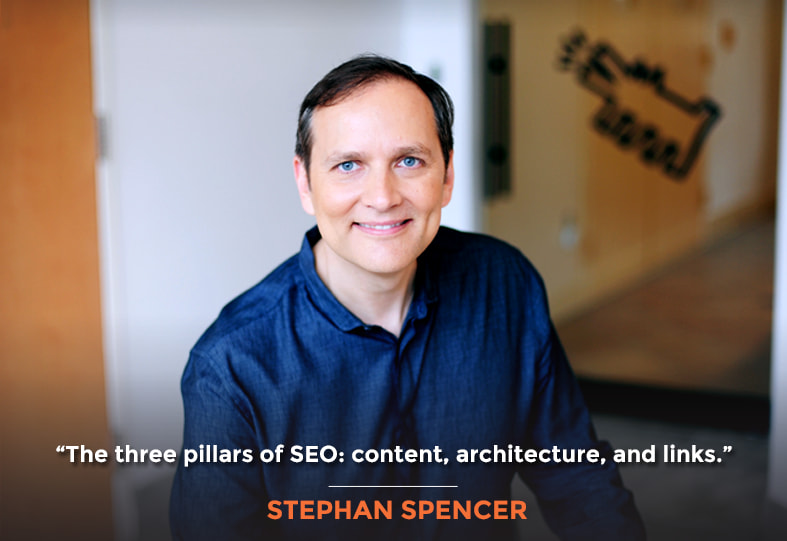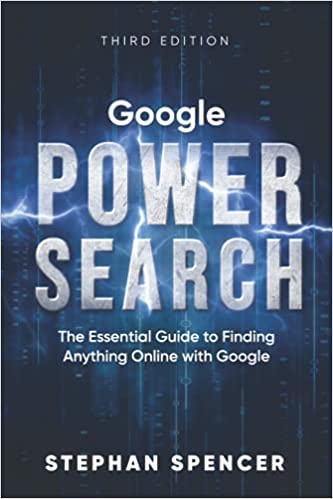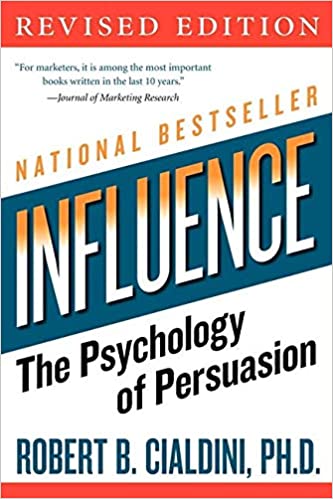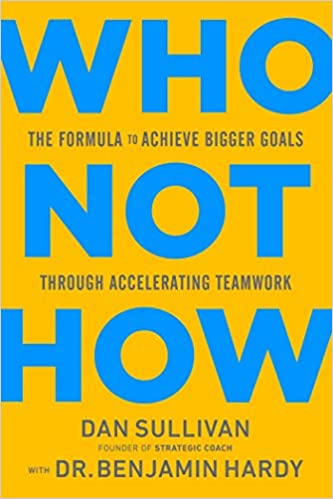Today’s show is an actionable, informational workshop that I led with a group of mostly Silicon Valley based entrepreneurs to talk about SEO fundamentals and best practices. I had a look at the websites of some of the attendees and dissected what was working, what wasn’t, and how to fix it. I gave my take on the biggest differences between SEO and paid search. I explained how to understand your ideal client avatar and how to identify the correct key search terms to target them.
Being a fly on the wall in one of my SEO working sessions like this one is an excellent way to get a better grasp of the boots-on-the-ground implementation of SEO and of conversion optimization, and that’s exactly what today’s episode is. So, without any further ado, on with the show!

In This Episode
- [01:16] Stephan discusses the three pillars of SEO.
- [09:11] Stephan explains how to increase your site’s trust in Google.
- [21:59] What is Stephan’s advice for handling your website’s SEO?
- [27:53] What is social proof? How can it help in your site’s growth?
- [33:05] Stephan explains the common mistakes and common redirects in implementing the three pillars of SEO.
- [37:54] What is Google Search Console? How is it helpful in SEO?
- [42:57] How do you relaunch a website with new content?
We could start with SEO because I am most known for that. I am co-author of a huge book on the topic, 994 pages. It’s pretty straightforward to think of SEO as having three pillars. Those three pillars are content, architecture, and links.
If you consider your website a destination, consider it a tree in a large forest with billions of websites and trillions of URLS you are competing with.
If you consider your website a destination, you could think of it as a tree in a large forest with billions of websites. Trillions of URLS are on the Internet, so you are competing with a lot of competition. If a tree falls in a forest and no one hears it, does that tree make a sound? What’s the answer to that one? What do you think?
Niki: Yeah, but nobody knew.
The answer is it did not make a sound. It made a vibration, but there was no ear to convert that vibration to a sound. So if you built a website and nobody can see it on the Internet, find it, it just sits in the middle of the forest, nobody is visiting it, it was a waste of time. You need a channel for folks to get to your website to share your brilliance, wisdom, services, and products and change the world. SEO provides that framework.
The three pillars of this framework are content, architecture, and links. If you don’t have great content, what’s for people to consume? What’s there for the search engines to consume, index, and rank? If you haven’t figured out what keywords people are searching for, that’s part of that content pillar.
If let’s say, everybody is talking about one thing in one way and you are talking about it in a completely different way, that’s two other worlds. Same planet, different worlds. You’re not connecting with them in the language that they use with their terminology. There’s a mismatch if they are referring to custom and you are talking about bespoke or vice versa.
You can’t get people to consume your content and the search engines to index and rank if you don’t have great content.
Knowing what people are searching for is helpful in determining your editorial calendar, navigation structure, taxonomy, and everything you do from a content creation standpoint. Videos and FAQs all need to start with the foundation of what people are searching for.
A good keyword is popular with searchers. It’s relevant to your target market, not just you and your business, but your target market. You can have keywords that are irrelevant to you as the website owner but relevant to your ideal target avatar, which can be perfect.
Let’s say you are selling baby furniture, baby bassinets and cribs, which are obvious keywords. Great. But what if you want to expand your reach and go after more expectant parents than those just typing those few keywords? You might consider baby names. Because who is searching for baby names? Only expectant parents. That’s a brilliant keyword opportunity, and it’s a much larger opportunity, too, because the search volume for that is orders of magnitude more than baby furniture and baby cribs.
You might think I am selling baby furniture. How am I going to monetize baby names? That doesn’t make sense. I don’t sell baby names, but you are offering value to these people, to these expectant parents. Maybe baby name meanings, trends, cute baby names, clever, thoughtful, or beautiful baby names. You’re giving them some value, and then you’re soft selling them with an essential nesting checklist, all the things for the baby’s new room.
That is how you build a list. That is how you targeted your exact audience market without relying on paid search and paid social. The moment you stop paying for that paid traffic is the moment you stop receiving that paid traffic. With organic, with SEO, you are building an asset. That means that if you build links and have great content and people come to your site for google searches, that doesn’t go away. Advertising is an asset that continues to give you monthly dividends, year after year.
Knowing what people are searching for help determine your editorial calendar, navigation structure, and taxonomy for content creation.
Back to those three aspects of a good keyword, which are part of that content pillar, popular with searchers, and some search volume for that keyword. It’s relevant to your target audience, if not your business. Then finally, it’s attainable. You can rank on page one for it because you are invisible if you’re on page two.
How many of you go to page two on Google? It’s a small-digit percentage of folks. Do you know the old joke, the best place to hide a dead body? Page two in Google. Popular, relevant, and attainable. Those are the three attributes of a good keyword.
Can anyone share a website address with me if we move from the content to the links pillar? It could be your site, or it could be a competitor’s site. It’s fine either way.
Niki: For the sake of the demo, it’s fun if you tear apart the Silicon Valley Inspiration Tour site.
Drop the URL into the chat. I’m going to share my screen, and I’m going to show you how easy it is to tell what the authority scores of a website are. It could be your site. It could be a competitor or a friend. It doesn’t matter.
I’m going first to show you a tool called Majestic. I will put in the full domain without subdomains like www, without HTTPS, and so forth because I want the full domain’s authority and trust score. You can see that your trust flow is 11 out of 100. That’s small because when you consider how this metric is calculated, it’s on a logarithmic scale. An 11 out of 100 is not 11% of the way to 100. If you think of the mountain, it’s still at the base of a mountain.
The easiest way to describe that is with a picture because the logarithmic scale I can explain by words, but a picture says a thousand words. So let’s see what that picture looks like. This is on a logarithmic scale as well. This is a 0–10 log scale, but you can extrapolate.

This is 7 out of 10. It’s at the top of this inset but is still at base camp for that mountain, the green section of the mountain. That’s a 7 out of 10. You’re 11 out of 100 for trust flow. It shows that you’re not very trusted. You’re way down here at the base of the mountain. You got some work to do.
Until you improve the scores, Google will see your site as untrustworthy. That’s your Achilles heel right now. I don’t know what else I can find digging into your site at this hour.
Niki: What makes a site trustworthy for Google?
Guest 1: What is this trustworthiness about?

If you check out this article I wrote for search engines, it details this topic. There’s an article called There’s no shortcut to authority: Why you need to take E-A-T seriously. E-A-T stands for expertise, authoritativeness, and trustworthiness. That’s a Google acronym, E-A-T. Google came up with that. They put it into their Google quality raters guidelines.
Quality raters are human reviewers that work for Google as contractors, rate millions of websites so that the machine learning algorithms have some data training to use to figure out what is a trustworthy website, what is an authoritative website, what an author with expertise looks like compared to one who doesn’t.
If AIs can do it, that makes it much more scalable. Right now, an army of humans is providing these ratings to the machines as training data. So it’s a key component, and in the section in the article, I go into some detail about Trust Flow as one metric that measures it.
Another is that Link ResearchTools has a metric called LRT Trust. The idea is that if you get a link from just a random website, it’s probably not worth a lot. On the other hand, if you get a link from CNN, it will be worth a lot more. That makes intuitive sense.
It’s not a democracy in terms of SEO. It’s a meritocracy. Jim Bob doesn’t get the same voting power as CNN because, on CNN, there’s a lot more fact-checking. CNN has editorial guidelines. They have a huge newsroom full of people and are producing content at orders of magnitude scale compared to Jim Bob. So it makes sense that some sites get more authority, trust, and power than others.
That’s how it works, but how do you increase your trust? How do you get more Trust Flow or LRT Trust, a good proxy for knowing that Google trusts your site more because it has its internal metric? It’s not using Majestic’s Trust Flow to calculate how trusted you are. Instead, it’s doing its thing inside its algorithm.
If you want more trust, you should get high-trust websites to link to you.
If you want more trust, you should get high-trust websites to link to you. It may be difficult to get a site that’s a cnn.com type of quality to link to you. For example, imagine if you are a love coach—like my wife Orion, she’s a love coach—and you get some PR. You get written up on the Tinder blog. Do you guys know about Tinder? Have you heard of Tinder? I’ve never used it.
This is an article on the Tinder blog. The blog is called Swipe Life instead of Swipe Left. It’s funny. Five Ways To Make The People You’re Dating Feel Special, Whether Or Not You’re Exclusive. One of the subject matter experts is life-coach Orion Talmay—that’s my wife—with the link to her homepage. That link is valuable. It’s not just Jim Bob. This is tinder.com. This is a big deal.
Another very powerful example is askmen.com. Has anyone heard of that site? It’s a popular website. Here’s an article on AskMen. Why We Kiss Under the Mistletoe (and How to Do It Right This Year)—as if you did it wrong the year before—with a quote from relationship expert and life coach Orion Talmay. She gives a quote and everything.
That single link made a difference, just one link. If you look at the metrics, askmen.com has a trust flow of 73 out of 100. That’s pretty good. If you can be selective, think about the 80/20 rule, the Pareto Principle—you’ve got the trivial many but the vital few. That’s where you should focus your energy on getting the vital few.
You can get a thousand links, but they’re all garbage. Focusing on the vital few and getting links like I just showed you—askmen.com and tinder.com—can move the needle big time.
The three attributes of a good keyword: popular, relevant, and attainable. Share on XThat’s the links pillar of SEO. They are getting folks to link to you. Think of it as if you’re running for President or Prime Minister; whatever the office is, you can vote in your country, and not everybody gets an equal vote. Some people are the equivalent of super delegates; they get massive amounts of voting power, and others get less. It makes sense to go after those who get the most voting power.
Niki: How long does this work? How many times would you have to be quoted on highly trusted pages? It doesn’t make sense if I’m quoted in 2015 for the next 50 years.
I would appreciate getting a handful of links a month in addition to the ones you’ve already garnered in the past. Of course, unless you’re a big company, you’ll have to up the ante quite a bit more. But for a small business or organization, just a handful of extra links a month can make a difference if they are the right ones.
Niki: How about something like Medium?

Medium is not valuable because Google understands that anyone can publish there. There isn’t an editorial manager who vets the content. It’s unlike The Huffington Post, Thrive Global, or entrepreneur.com, where vetting is involved. Anybody can spin something up on Medium and publish stuff. It’s not that different from getting published on blogspot.com or some random blogging platform.
Niki: Does it make a difference if the blog has a lot of use?
It makes a difference, but that isn’t my preferred starting point. I would go after sites with much trust and authority and not just a blogging platform. That’s what Medium is.
I’ll give you an example. I worked hard to get a link and an article onto the Harvard Business Review. You can see I even put the logo of Harvard Business Review on my homepage. I’m so proud of getting the article published there in HBR.
When you get an article with the link, and it’s published on a high-trust website like HBR, I think of who’s trusted. Stanford University, Oxford, Cambridge, MIT, Harvard (of course), FirstGov in the States, CERN in Switzerland, National Science Foundation, PubMed, WebMD. These are super high-trust, high-authority websites. It will be really hard to spam your way into Harvard Business Review. You can’t create some garbage article, submit it, and get published in Harvard Business Review.
The amount of back and forth I had to do with the editor at HBR to get published was insane. I’ve never had to do so much work to get an article published. Here’s the article, How to Make Any Business Trip Less Boring. The first article I submitted was really solid. It was really good, but they said it’s no different than any other article on Forbes, Entrepreneur, Inc, or Fast Company. They don’t take those kinds of articles.
It must be an article you’d only expect to see on HBR. They wanted something counterintuitive, something that goes against the grains and goes against conventional wisdom. So I had to gut the article and start all over again. But they were happy with it after I finally finished it.
Do public relations, publish articles and contribute resources to sites.
Look at how I was able to get a link. Here’s my little byline at the bottom. This link here goes to my website. This other link goes to Amazon, which doesn’t help me. That’s how you do it. You get articles published. You do PR (public relations). You contribute resources to sites.
Here’s a pretty cool one. Stanford has many resources relating to trace routes and all sorts of IP address lookups and things like that. I thought it was in my history, but it’s not. The idea here is it’s a big resource list, and my client’s tool was not there. What Is My IP Address is one of my clients. I suggest they add this tool because it’s really valuable. It does IPv6 lookups, not just IPv4.
I emailed the webmaster. His email address was at the bottom of the page. He says, “that’s great. I like it.” Boom, that was easy. My client just got the stanford.edu link.
That’s the links pillar, and then the final pillar of SEO is architecture. I’m not just talking about navigation structure or taxonomy. I’m talking about all the geeky stuff that would make your head hurt or glaze your eyes. Things like XML Sitemaps, robots.txt, schema.org, href link tags, canonical tags, and duplicate content. To crawl your site, use third-party crawlers like Screaming Frog, DeepCrawl, or Oncrawl.
This kind of stuff will hurt your head, so don’t do it yourself. Instead, hire somebody to do it for you. Somebody good at SEO or at least read the book on the topic, if not written it.
E-A-T stands for expertise, authoritativeness, and trustworthiness. Share on XLet me give you a couple of examples. If we go to Silicon Valley Innovation Tours again and pick instead of a page, you’ll find it by clicking around and perusing the site. We will go directly to the robots.txt file. It’s the only spider that goes to the Google bots, Bing bots, and all of that.
It looks pretty geeky. Why do I need to know this? You don’t need to know it, but somebody needs to know that, for example, this line is there because that’s good. Not having that line with the sitemap directive means you have to submit the sitemap URL inside the Google Search Console and Bing Webmaster Tools if you don’t have to do that because you’ve included here in the Robots.txt file that eliminates something that would have been done for you as an additional hoop to jump through.
All sorts of stuff can be checked. For example, we can look at the sitemaps file. Let’s actually do that. This is called an XML Sitemap. It’s generated by a tool like Yoast SEO plug-in for WordPress blogs. You can create it as an example. This one is a sitemap index that lists other sitemaps within it.
You need to know to hire the right ‘who.’
Let’s pick the page’s sitemap. You don’t need to know this, but I’ll tell you that Google ignores priority. You don’t need that. All this geeky stuff, you don’t need to know. You need to know to hire the right ‘who.’
There’s a book called Who Not How. Dan Sullivan and Dr. Benjamin Hardy published it. Finding the right “who” is the secret to success—the who is going to figure out the how for you or already has the how. You don’t need to know that this is a waste here having the priority field, and the fact that it’s the same priority is funny, too. Of course, these pages have the same priority, which makes no sense.
Going back to the homepage again, let’s show you something else. SEO is about increasing your rankings and traffic from Google, but there’s another thing that goes hand in hand with SEO: conversion. It’s getting people already on your site to take the next action you want them to take.
A lot is going on, and it’s hard to read all of it because of the busy background and everything and the translucent background. This makes it difficult for a person to do business with this organization. Any distraction, any additional hoops you make people jump through, any difficulty in reading, consuming, or understanding the content, lack of clarity, or additional distractions, all of that stuff—
Niki: I just posted in the chat the beta relaunch of the website that will be launched.

Oh, great. That’s fun. Let’s have a look. 2020 v2. Is it a little behind schedule? Often that happens. The cardinal sin for conversion is to put a distracting animated video background on autoplay filling up the whole screen. That is a surefire way to kill conversion. I’m not just talking out of my hat here.
Here is the evidence. A great article on Wistia talks about The Six Reasons Why You Shouldn’t Have an Autoplaying Homepage Video. Tony Robbins had an autoplay video on his homepage.
It was really cool. It was full immersion. It felt like you were there at his event. It’s such high energy. It’s like a rock concert. But it’s a motivational and personal development event. You get a real sense of what it’s like, yet they killed it. It hasn’t been up on their site for years and years.
Why? Because it killed their conversion. It caused them lots of money. This goes into the reasons why it is terrible. It adds cognitive load. It’s distracting. It makes it harder for people to find where the main CTA (call-to-action) is. It just does not work. It turns a homepage into a not a homepage, into a loggia or a front entrance instead of the homepage. It’s inefficient. It’s bad from a conversion and usability standpoint. You won’t get the outcome. Kill that, replace that with a still image and add social proof above the fold.
Add things to your page that convince people they should work with you.
Now, I’m moving from SEO to conversion, telling you what not to do that will distract people and cause them not to take a powerful next action with you. I also encourage you to add things to the page that convince people they should work with you, especially above the fold.
Social proof shows that you come preselected, that you are already being used by the best brands in the business in their industry or that the mainstream media has selected you as a thought leader or subject matter expert.
Again, I’m going to pull up stephanspencer.com. You recall from a few minutes ago, Harvard Business Review, this whole line of social proof logos, as seen on logos, helps establish credibility with minimal cognitive load. People don’t have to think. They see “oh, NBC, ABC, CBS, and Fox.” He’s the bee’s knees. He’s probably pretty legit.
If you make these logos more subtle and subdued, all grayscale as I’ve done instead of super colorful, huge, and so forth, they won’t try to click on those logos. They’re not going to be distracted by them. They add that crucial element of social proof.
Social proof should be sprinkled everywhere on your site. For example, there’s Tony Robbins with an audio quote, “I know Stephan. I want to tell you something. This man is a genius. He’s known as a tough guy in the SEO business.” If you recognize his voice, he’s got this distinctive raspy voice, which is clearly Tony Robbins. So there’s social proof in the form of audio.
Social proof should be sprinkled everywhere on your site.
Social proof in the form of video testimonials. Here’s the head of SEO at Zappos talking about working with me. Then there’s my podcast and all the cool people like Seth Godin, who was a guest on my two shows, Marketing Speak and Get Yourself Optimized. Finally, there’s more social proof in the form of my books.
There’s social proof all over the place, even on subpages. You go to the speaking page and another set of logos, but this time it’s not HBR, ABC, CBS, etc. It’s Stanford, Affiliate Summit and so forth. They are venues that I’ve spoken at and folks I’ve said for.
If you go to the results page, instead of getting those logos I just showed you, you’re seeing clients—Sony, Chanel, CNET, Zappos, and Quicksilver. That social proof is critical.
If you’ve ever heard of the book, Influence by Dr. Robert Cialdini, one of the core principles of persuasion is social proof. You are preselected. You’re like the person who walks into the bar with half a dozen supermodels surrounding you. Everybody is paying attention to you walking into the bar. Who are your supermodels, essentially? How are you going to get super credible?
Do you guys know who Peter Diamandis is? Have you guys heard of the XPRIZE?
One of the core principles of persuasion is social proof.
Niki: I’m a faculty coach at Singularity University.
Awesome. What he did was a brilliant form of super credibility. When he announced the XPRIZE, he was on stage with the former deputy director of NASA and, I think, seven astronauts. Nobody thought to ask, does this guy have $10 million in prize money? Nobody asked, and he didn’t. He didn’t for years. It took him years to find that money.
He came out with super credibility, and everybody said, “wow, this is the real deal.” What are your elements of super credibility, and can you put those onto your home page and every other important page of your website?
We talked about conversion. We went through the three pillars of SEO: content, architecture, and links. Now I want to see what you want to learn more about. Would you like me to pull out more websites? Do you want to talk more about conversion? Do you want to get geeky about SEO? Do you want to get more into the creative aspect of it and content marketing? Where would you like me to go?
Niki: I would like to open the floor for everyone because this is a chance to have this conversation with so much depth and quality. I want to be the beneficiary of this. Anyone?
Guest 2: I’m so fascinated that I don’t know what to ask or where to go deeper because everything was interesting and new.

Niki: What always works is common mistakes, just like the playing video you shared on the new website that no one will ever see because I won’t do it.
Okay. The best way to see common mistakes is to see those in tangible forms. Does anyone want to volunteer for their website bravely?
Guest 3: It’s one I’ve developed myself. I haven’t launched it. I should have it, so I built it up a year ago. I would change it now. There’ll be plenty of mistakes, so I’ll gladly share that.
Thanks for being a good sport.
Guest 3: I forgot the www and everything.
That’s a great little point: if you don’t put in the www, it should redirect to the www version, or the www version should redirect to the other one. Let’s see if that happens. I do not know a www here. Let’s put in the www and then see what happens.
That one redirects. Do you see how it doesn’t have www? If I leave out the www, it goes to the main non-www version of the homepage. Let’s put www in, and you’ll see that it redirects to the version without the www. That’s fine. Pick one, and you’ve picked a non-www to be the version to always go to. If you have both, then that creates duplicate content that can confuse Google.
Guest 3: Okay.
If you had two twin brothers running for president or prime minister, neither one would win, probably, because they look too similar to each other and probably have similar platforms. That would be terrible, so we don’t want duplicate content.
Guest 3: I’ve got two that both work. Do I have to get rid of one or the other?
If you care about SEO, you’ll want an account with the Google Search Console.
No, you’re fine because you’ve set it up, or your tech person has set it up. Whoever configured your website did that right. Whereas if we put in Silicon Valley Inspiration Tours, I don’t know if that’s set up right. Let’s test that quickly. Take out the www and see if it goes to the www. Yeah, it does. That’s good.
There are so many different tools you learn about. If you care about SEO, you’ll want to have an account with the Google Search Console.
Let me show you what cool insights you can get from Google Search Console. I can’t access your Google Search Console, but this is for my wife’s site. If I go into mobile usability as an example, there are no errors. That’s good to know. If I had errors, then I would have to fix them.
There might have been some 404 errors. I suggest fixing those. But I would never know about the mistakes if I didn’t know how to use this tool. I would never know what keywords people are typing in to find my site and which things they are clicking on and not clicking on.
My wife, Orion, ranks for Dr. Pat Allen‘s quotes. Her picture is somewhere on my wife’s website. And one of my websites is right below it because I also had her as a guest on my podcast. So that’s her being on my wife, Orion. My wife has a podcast called Stellar Life. Stellar Life and Orion are like a constellation. By the way, couples who podcast together stay together.
That’s Google Search Console. You should sign up for that. It’s a free tool. There’s no reason not to have access to it. The fact that you don’t have access to it or you’ve never signed up for it is a huge missed opportunity. Until you sign up for it and claim your site, you won’t get data on what keywords people use to find your site.

Guest 3: I was going to question what they are using.
Another cool tool is called PageSpeed Insights. This is another free tool from Google, and I’m going to go ahead and paste your website. You do have duplicate content. You have HTTP and HTTPS versions of your homepage with the same content.
One should redirect to the other, which should be the HTTP redirecting to the secure HTTPS version.
This is a very common mistake, having a slow-loading homepage. This isn’t too bad. You’re not in the green zone, but it’s not horrible. A 71 is not horrible. The issue that is urgent and important for you to fix is this one right here. Your LCP (largest contentful paint) is terrible. It’s six seconds. That’s why it’s in red because it’s bad.
The little blue ribbon next to that metric signifies that it is a key metric for core web vitals. Your website has to pass all three core web vitals. That includes the largest contentful paint (LCP) and cumulative layout shift (CLS); you pass that. See that green? The final one is the first input delay.
If you build a website and nobody visits or can find it, then you've wasted your time, energy, and financial investments. Share on XWe don’t see the first input delay here because you don’t have enough traffic to your site to have a Chrome User Experience report. So what happens is that users of Google Chrome are tracked and analyzed. We’re all guinea pigs if we use Chrome. So what happens is that the websites you visit and the speed of those pages loading on our site gets measured and reported back to Google.
Then you can see what the FID is for a site with more traffic. You don’t pass all three core vitals because you don’t pass LCP. Google will be penalizing sites that don’t pass core web vitals, and you don’t pass core web vitals.
Niki, Would you like for me to put it on your site?
Niki: You can look into it. I have one question. If I relaunch the website, do you do it in the first content as the previous one and then delete the old page? Or will I start a new one and then redirect it to the URL?
I would keep it on the same domain and replace the pages with the new versions.

Niki: I work with Wix, and I can add new pages and then delete the old ones or create a new page and assign that to the URL. What do you think is better?
Either one is fine.
Niki: Okay.
I would probably remove Wix from your tool chest and replace it with WordPress. Wix is not very good for SEO. It wasn’t designed with SEO in mind. They didn’t hire SEO experts when they built the tool.
Niki: The same with Editor X, the new one?
It will pale compared to WordPress, so you could go with WordPress. WordPress is built from the ground up with SEO and usability in mind. When you include the Yoast SEO plugin, which is free—you can pay for the premium version, which is a good idea—it’s inexpensive, and you’ll have all sorts of awesome SEO built-in that Wix can’t compete with—the same with Squarespace, the same with all those kinds of drag-and-drop simple-to-use website builders.
Your LCP is red, and you don’t pass core web vitals. You’ll get penalized when the page experience update comes. Timed interactive is terrible, and all these things, but these two metrics that have the blue ribbon are part of those core web vitals.
Niki: To reduce that, the largest contentful paint, for example, is that the size of the images out there?
No, it’s how long it takes for most pages to load. It’s not everything, but there’s a more precise definition for this that is much more technical.
Niki: Is there a simple way to reduce that?
Yeah, there are lots of things you can do. For example, you can reduce the size of images. There’s a tool called Screaming Frog. You can download it from screamingfrog.co.uk. It’s a spider that spiders through your site (or any site).
I’m loading it right now and will put Silicon Valley Inspiration Tours into this. It’ll start with the homepage. It will crawl that page, find all the links on that page, and then will make a list of pages to then explore based on what it found on the homepage and will start exploring those pages, find other links on those pages, add those to the lists, and start exploring those.
With SEO, you are building an asset. This means if you build links and create great content, people will come to your site from google searches, this aspect of SEO never changes. Share on XIt will look for 404, broken links, broken images, overly large images, and all sorts of issues.
Then I can go into the images tab and specific to page speed. I can sort all of the images on the site by their sizes. We can get so close. So we can see whether you have a five or four o’clock shadow.
You don’t need that big of an image, Niki. I don’t know what page that is on, but that’s crazy.
Niki: It’s supposed to be on the page. It’s a thumbnail.
It’s a thumbnail. Do you want the people to get the full-sized image?
Niki: No. Wix would convert the larger image to smaller images.
Okay. This is the stuff that if you hire somebody who knows how to use tools like Screaming Frog, you can figure it out yourself. As you can see, it’s not that technical. It does require a little bit of technical acumen, but it’s not terrible. So if you hire somebody to do this for you, it’s easier.
Any last questions for the last couple of minutes before we wrap up?
Niki: Stephan, I would like to give a little return of the favor for this very insightful session. I’m going to buy a book for everyone in the room. Which one should I buy?
Okay, thank you. I suggest Google Power Search, the third edition has all sorts of new, cool stuff.
Niki: Yes, please do so. I will buy at least five books. Everyone in the room benefited.
Thank you. It was a real pleasure chatting with all of you guys, and happy to be a resource if you are trying to figure out who to work with and want some suggestions or are looking to redo a redesign. If you want to figure out who to get to do the redesign work or who webmaster to hire, happy to make suggestions.
Niki: Thank you so much for this. First, I have to say that you have the feeling of things going wrong, but the moment you get a bit of this is where things are going wrong, even if it’s a long list, it feels a lot better than if you don’t know what’s going wrong.
Enjoy the rest of your day. We hit the top of the hour. Thank you, that was excellent. Thank you so much.
You’re welcome.
Niki: Bye, Stephan.
Bye, everybody.
Important Links
Apps and Tools
Articles/Newsletters
Books
Businesses/Organizations
People
Your Checklist of Actions to Take

















Leave a Reply